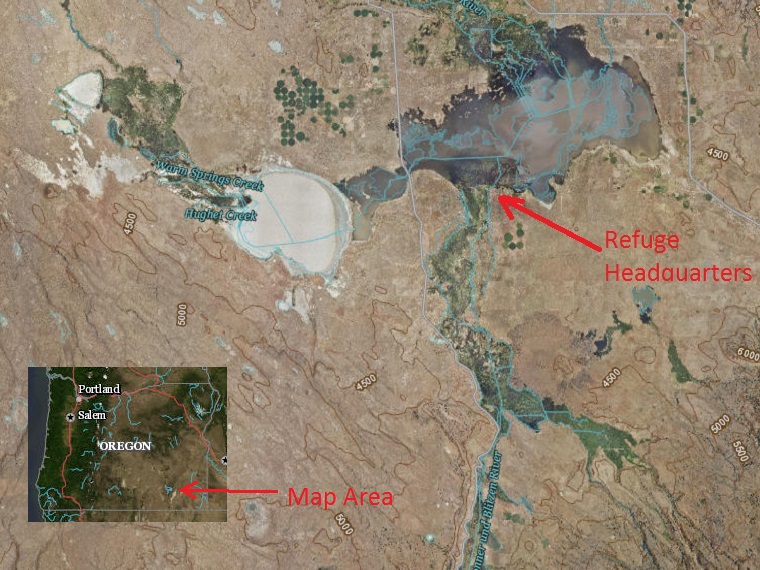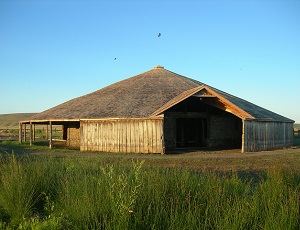Currently making the news is the occupation of Oregon’s Malheur National Wildlife Refuge by armed extremists. However, media descriptions of the land are generally limited to describing it as remote. Chicago Public Library has many government documents describing this subtly fascinating land. We also have laws, regulations, maps and studies of Western land use policy.
I have firsthand experience with the refuge. My mother was a biologist who dragged her kids along on frequent trips to the refuge. The refuge is remote—305 largely uninhabited miles southeast of Portland. The last 200 miles are especially straight and lonely as they pass through the sagebrush and lava plains of Oregon’s high desert. A not uncommon memory is waking up in the middle of the night to see my mother driving our old Mercury station wagon down the white line in the center of the road at 110 mph. Note: this was likely legal under the Oregon traffic laws of the time.
The area is so remote that the state maintains a boarding school in nearby Crane, Oregon, for ranch kids who might live a hundred miles over dirt roads from the nearest high school.
The 293-square-mile refuge was established in 1908 by hunter and conservationist President Theodore Roosevelt to preserve waterfowl populations. The refuge is in the Great Basin, the part of America’s West where rivers don’t flow to the sea. Instead, they flow off the mountains into marshes, lakes, salt lakes and playas (dry lake beds) where the water just evaporates in the dry desert air.
Both the picturesquely named “Donner und Blitzen” and Silvies Rivers evaporate away in the Malheur National Wildlife Refuge. It has lakes, marshes and playas providing habitat for waterfowl, armies of mosquitoes and other animals. Indeed much of the refuge is water. The headquarters area itself is surrounded by marsh and the large shallow Malheur Lake. Sagebrush, grassy uplands and lava rimrock provide habit for cows, deer, coyotes, rattlesnakes, etc. Remote as it is, the refuge is a destination for birdwatchers and hunters.
The refuge is centered on the area of the huge P Ranch that at one time was owned by a cattle baron named Pete French. Supposedly he obtained much of his land by flooding federal land. This allowed him to buy it cheaply, claiming it was marshland. Then he would drain it and use it for grazing. The remnants of the P Ranch were sold back to the government during the Great Depression. One particularly interesting remnant is P Ranch’s Round Barn.
A homesteader shot and killed Pete French in 1897. Although I’m unable to find any proof, I’ve always thought that the Pete French story provided the cattle baron vs. homesteader theme much beloved by fellow Oregonian Zane Grey and other writers of Western fiction and movies.
The area has several ties to Chicago. North of the refuge is the town of Hines, where Chicago's Edward Hines Lumber Company established a sawmill in the early 20th century. A hundred years ago most cattle would have gone to Chicago to be slaughtered. Sears and Montgomery Ward catalogs were a staple in remote ranches.




Add a comment to: In the News: Malheur National Wildlife Refuge